Auctions
A Look at Two Most Important Watches at Phillips New York Spring Auction
Headlining the inaugural spring auction are two historically important watches that speak to the core of independent watchmaking – its foundations and legacy. The star of the show is an Anniversary wristwatch by the late George Daniels. It bears the serial number “00” and is one of just four examples made in platinum. The second is an F.P. Journe Chronomètre Souverain, also in platinum, which was a personal gift from Francois-Paul Journe to Daniels in 2010. Engraved on the balance cock are the words “FP to George Daniels, My Mentor 2010”
Rightly considered to be the most influential watchmaker of the 20th and 21st century respectively, the two watchmakers shared a close personal bond, both having been inspired by the work of Abraham-Louis Breguet and strove to emulate his elegance in engineering.
George Daniels Anniversary Watch, Number “00”
Widely recognized as the greatest watchmaker in the modern history of horology, George Daniels is perhaps most renowned for inventing the Co-Axial escapement, but of equally significant influence was his contribution to the trajectory of independent watchmaking. The trade, covering the span between the industrial revolution and the quartz crisis, was largely characterized by an intense division of labour. But Daniels became the first watchmaker to master 32 of the 34 essential skills required in the construction of a mechanical watch. He proved that it was possible to make a living as an independent watchmaker, pioneering a market and sector that had never existed before. His acclaimed tomes of scholarship on Breguet and his instructional book Watchmaking, which is widely regarded as a horological bible to this day, provided a guiding light for a whole new generation of watchmakers.
During his lifetime he made 24 unique pocket watches and four unique wristwatches – a double-case tourbillon, a chronograph with a four-minute tourbillon and a pair of rectangular tourbillon watches in blue and white respectively. On top of that, he created two serially produced limited editions with his protégé and heir apparent, Roger Smith – the Millennium launched in 1998 which was powered by a self-winding ETA-derived Omega movement and the Anniversary, which became the only serially produced wristwatch with a new movement made from scratch.
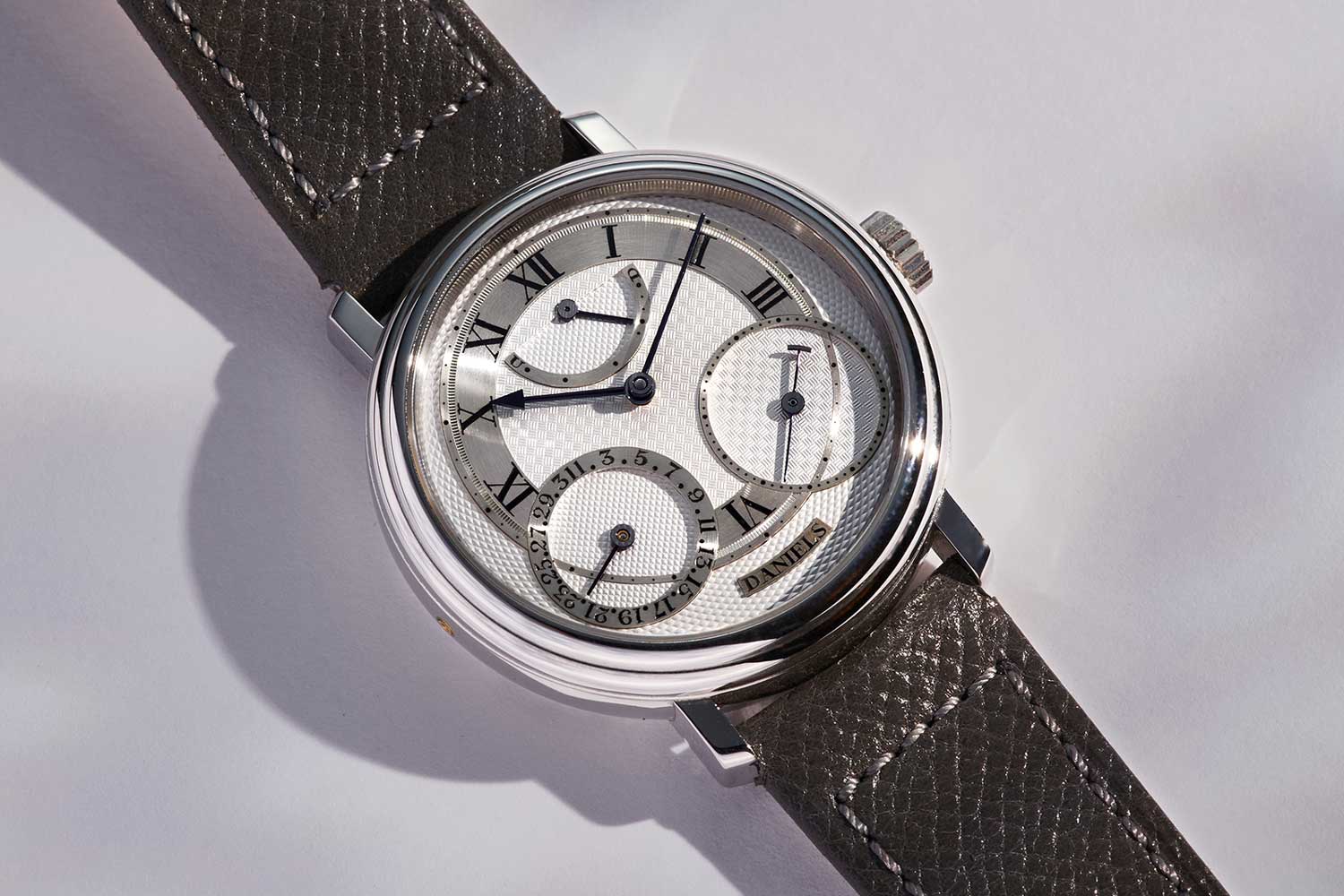
This example is one of just four Anniversary watches made in platinum and the only one bearing the number "00" across all metals
The series consists of 35 watches produced in yellow gold, four in white and four in platinum. This particular example is in platinum and is the only Anniversary watch across any metal to bear the serial number “00”.
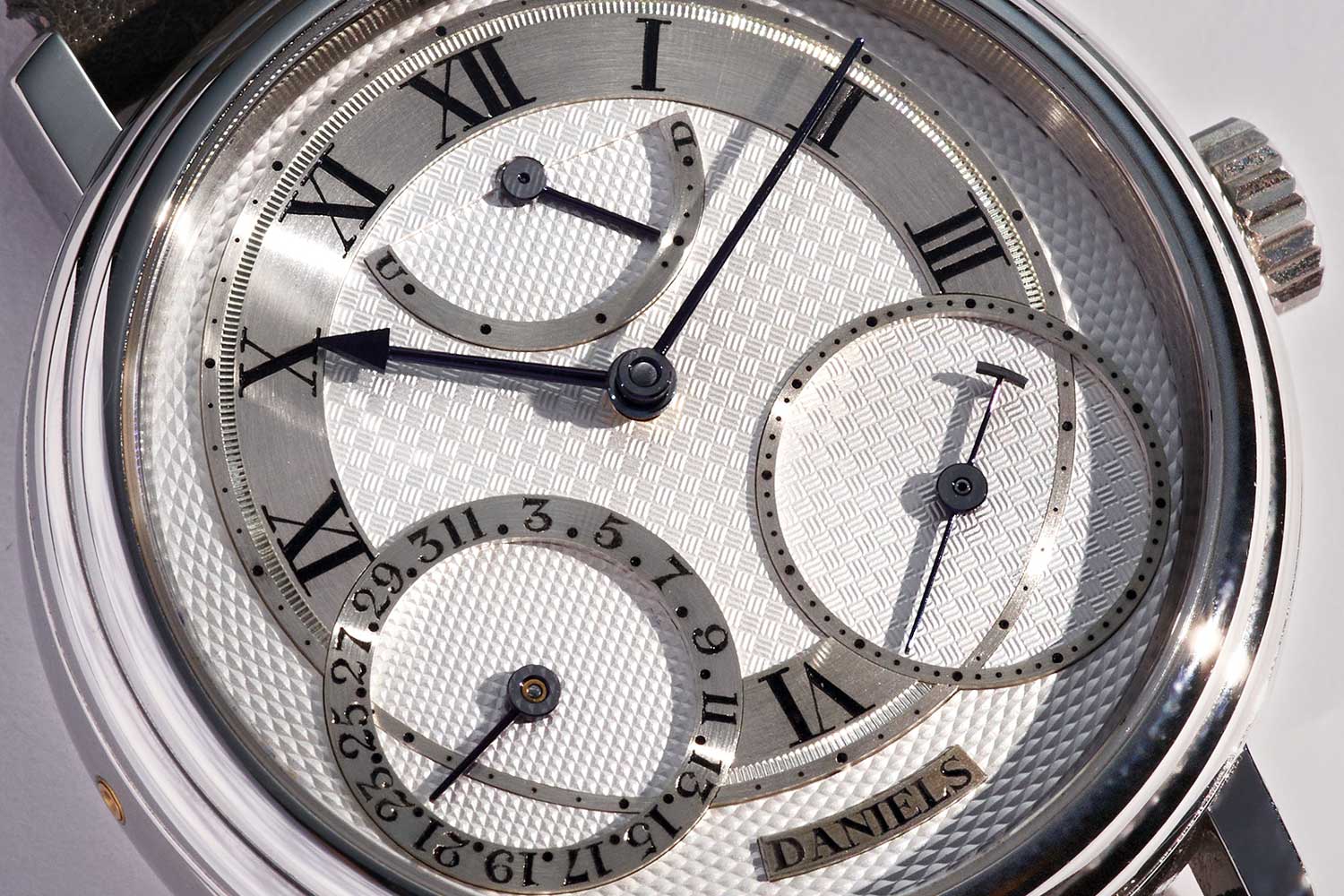
The symmetrical dial has been engine-turned with three distinct guilloche patterns and paired with beautiful blued steel hands that are rounded
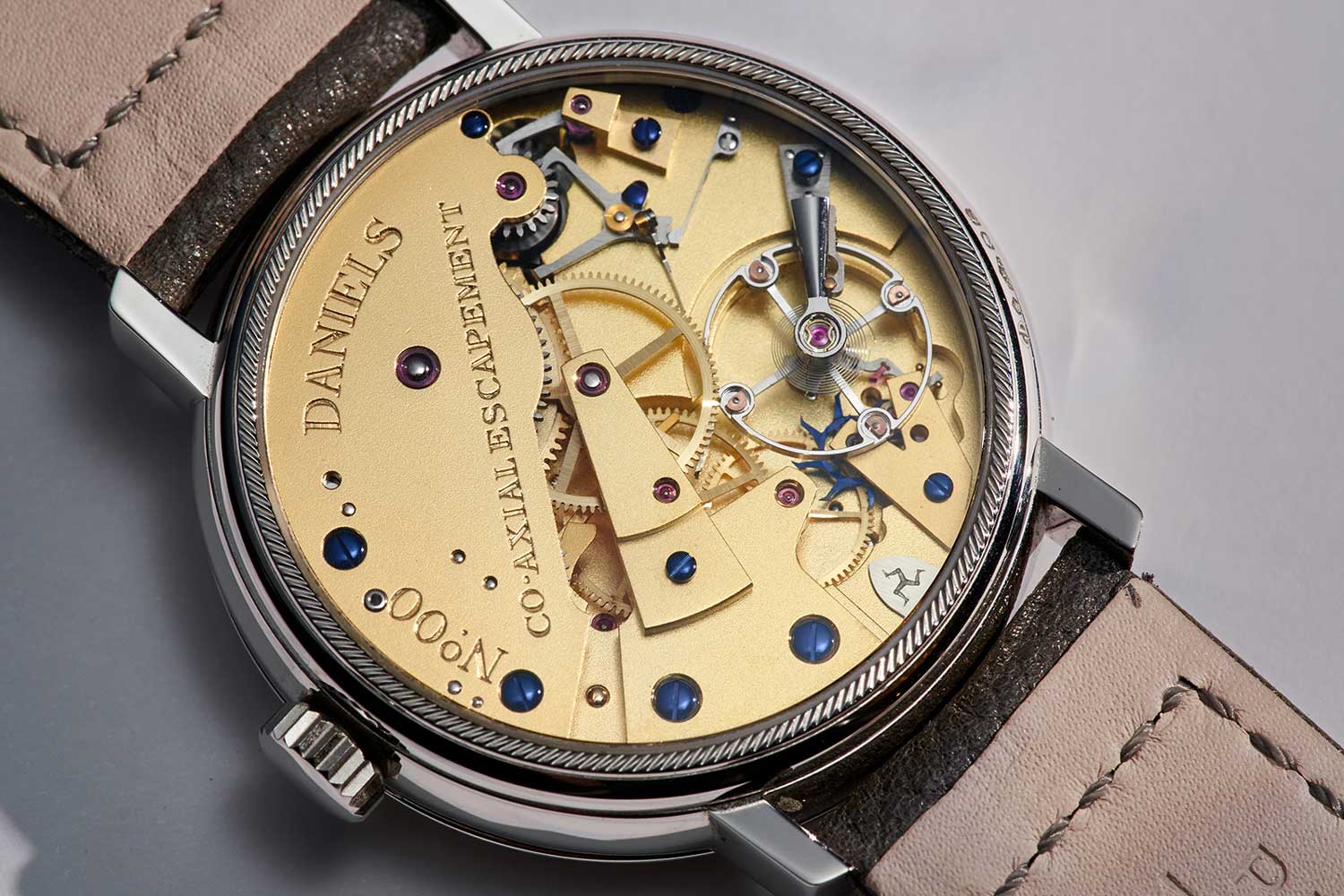
The movement was designed by Roger Smith with every stage approved by Daniels
Visible next to the barrel is a cone and feeler, also known as a differential screw mechanism for the power reserve. This method of displaying power reserve is a recurring element in many timepieces from Daniels, who preferred its aesthetics over the more common differential gear system.
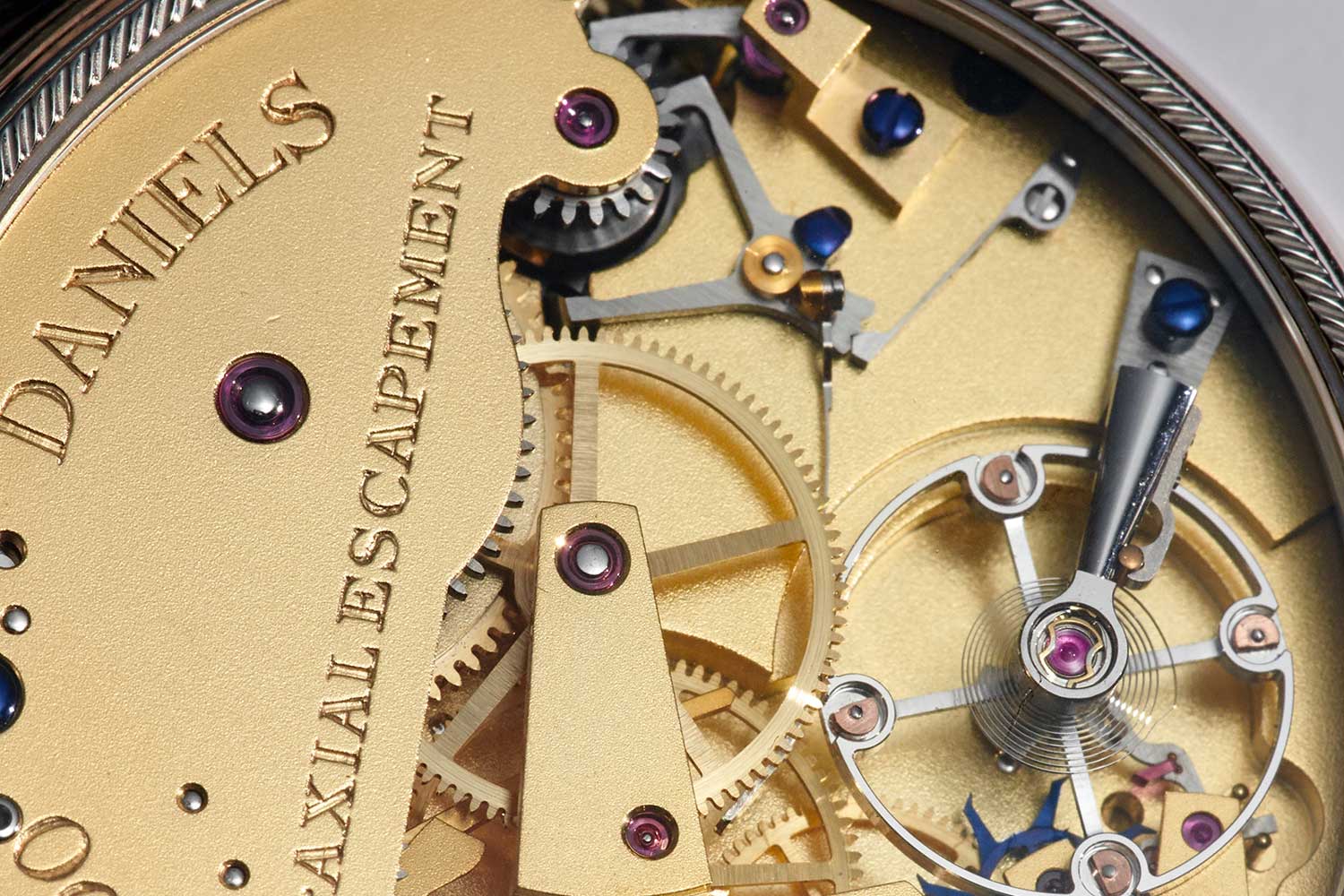
Visible above the center wheel is the differential screw system for the power reserve indicator. It works in conjunction with a stopwork mechanism that stops the balance before the mainspring unwinds completely
The basis for a stopwork mechanism is to stop the balance before the mainspring winds down completely. It is a simple solution to address waning torque, utilizing only part of the mainspring, during which force is most consistent. As the cone falls during unwinding, a forked lever that is connected to a brake lever embraces the cone, causing the brake lever to lock the balance. As the watch is wound, the cone rises and pivots the brake lever to release the balance wheel. Visible just above the balance wheel on the right is a tensioner spring that puts pressure on the forked lever, facilitating engagement and disengagement of the balance.
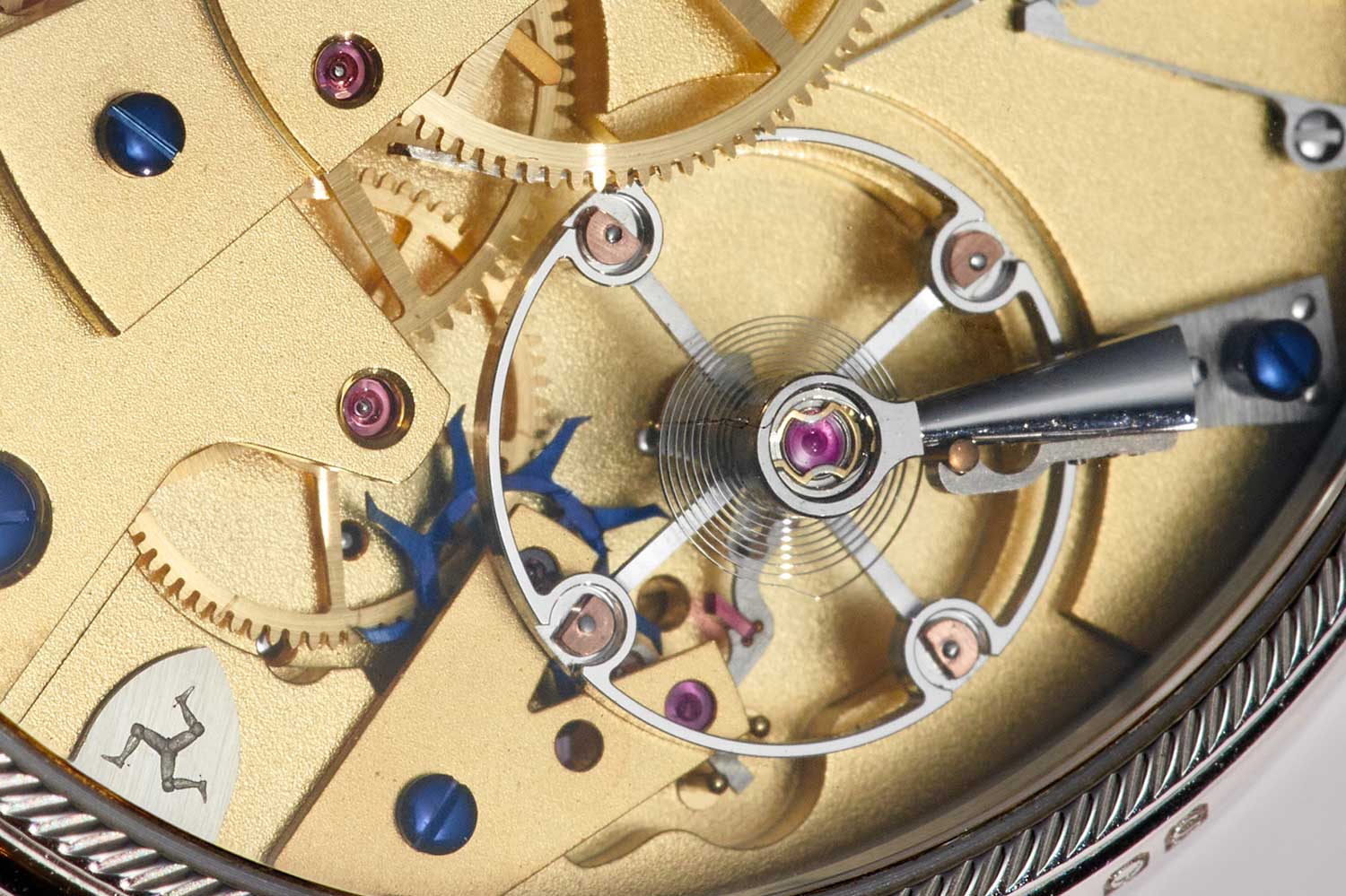
The movement is equipped with a single-wheel Co-Axial escapement that was refined by Roger Smith to enhance concentricity while reducing inertia
Power reserve is 36 hours while the balance runs at a frequency of 2.5 Hz. The balance is free-sprung with four gold inertia weights on its rim and is held in place by a rounded, black polished cock. The rest of the movement has a beautiful frosted finish which offers an appealing contrast to the engine-turned dial. Lastly, the barrel bridge is engraved with the number “00” alongside the Daniels name.
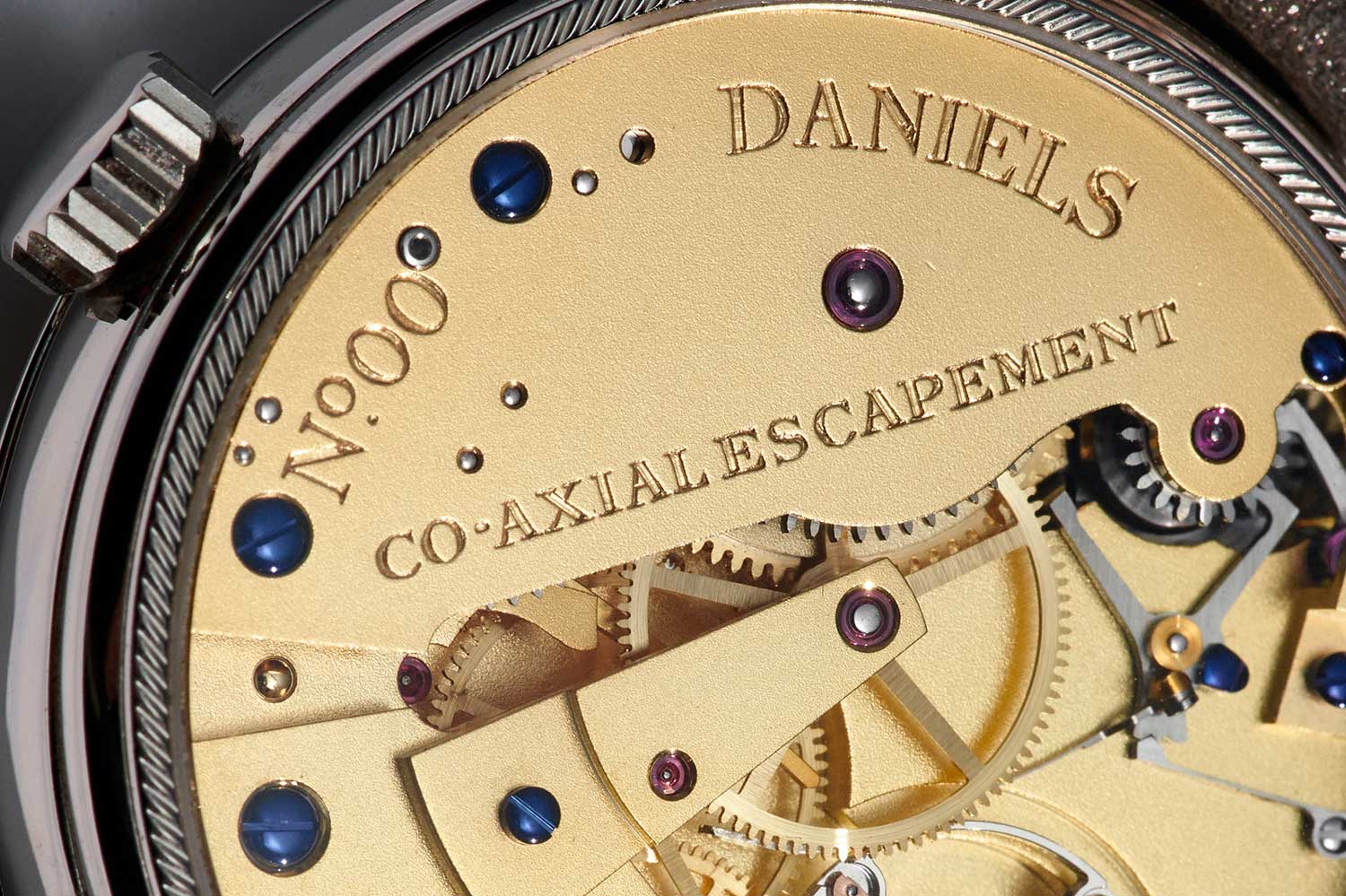
Engraved on the barrel bridge is the number "00" along with the Daniels name
F.P. Journe Chronomètre Souverain Gifted to George Daniels
A gift to George Daniels from Francois-Paul Journe, the Chronomètre Souverain is, in essence, a relic of the legacy left behind by Daniels, carrying the admiration one watchmaker had for another. Almost inevitably, through his books, pocket watches and common branches of interest, Daniels became a great inspiration and a mentor to Journe.
Both watchmakers shared the same language of mechanics – an elegant practicality in construction while putting precision at the heart of their watchmaking. This extended beyond the essence of watchmaking to the development of complications. Both have a knack for executing complications in an inventive yet exceedingly practical way, most evident in watches such as George Daniels’ compact chronograph wristwatch and the F.P. Journe Centigraphe.
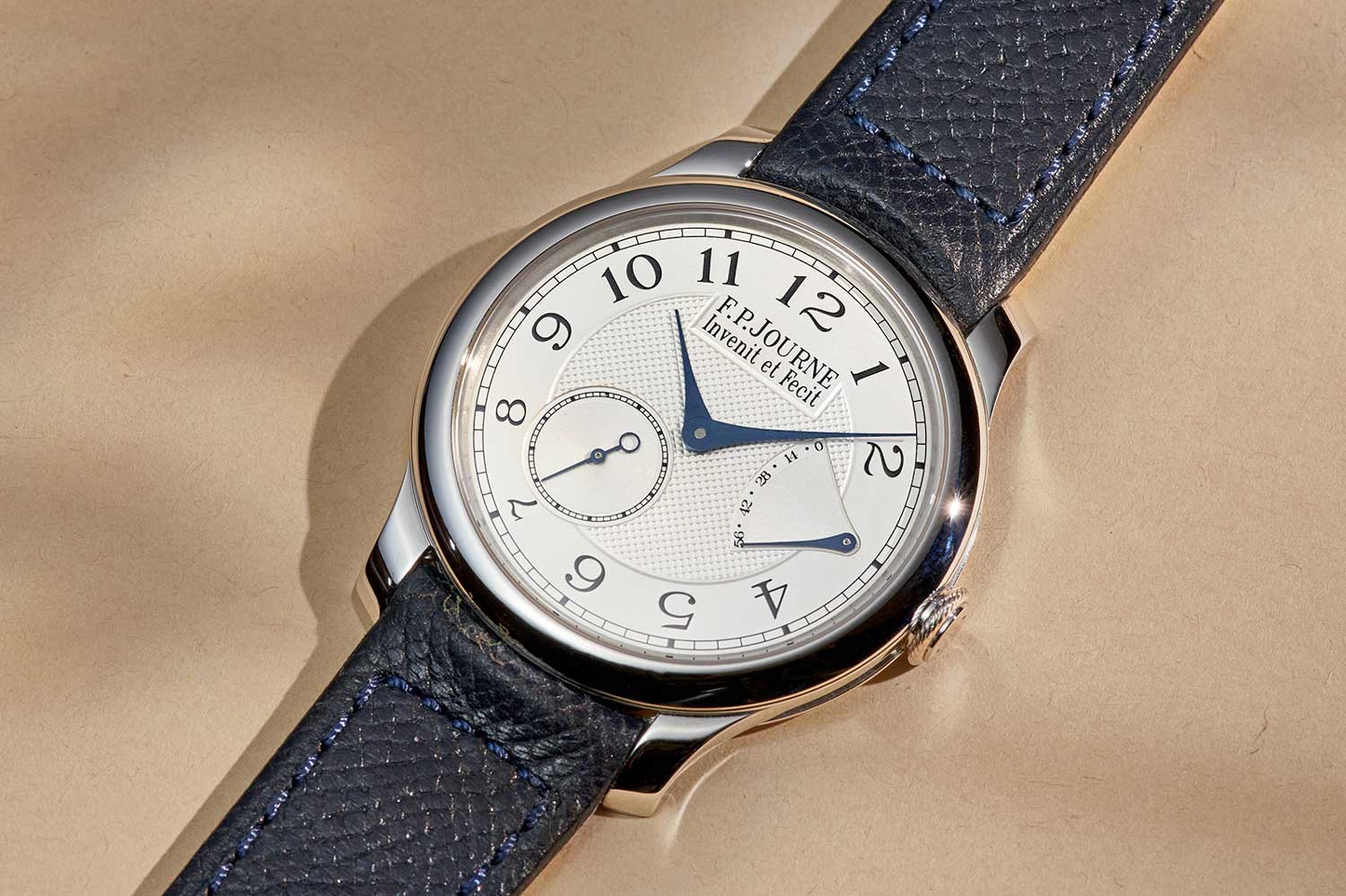
The 40mm platinum F.P. Journe Chronomètre Souverain gifted to George Daniels in 2010
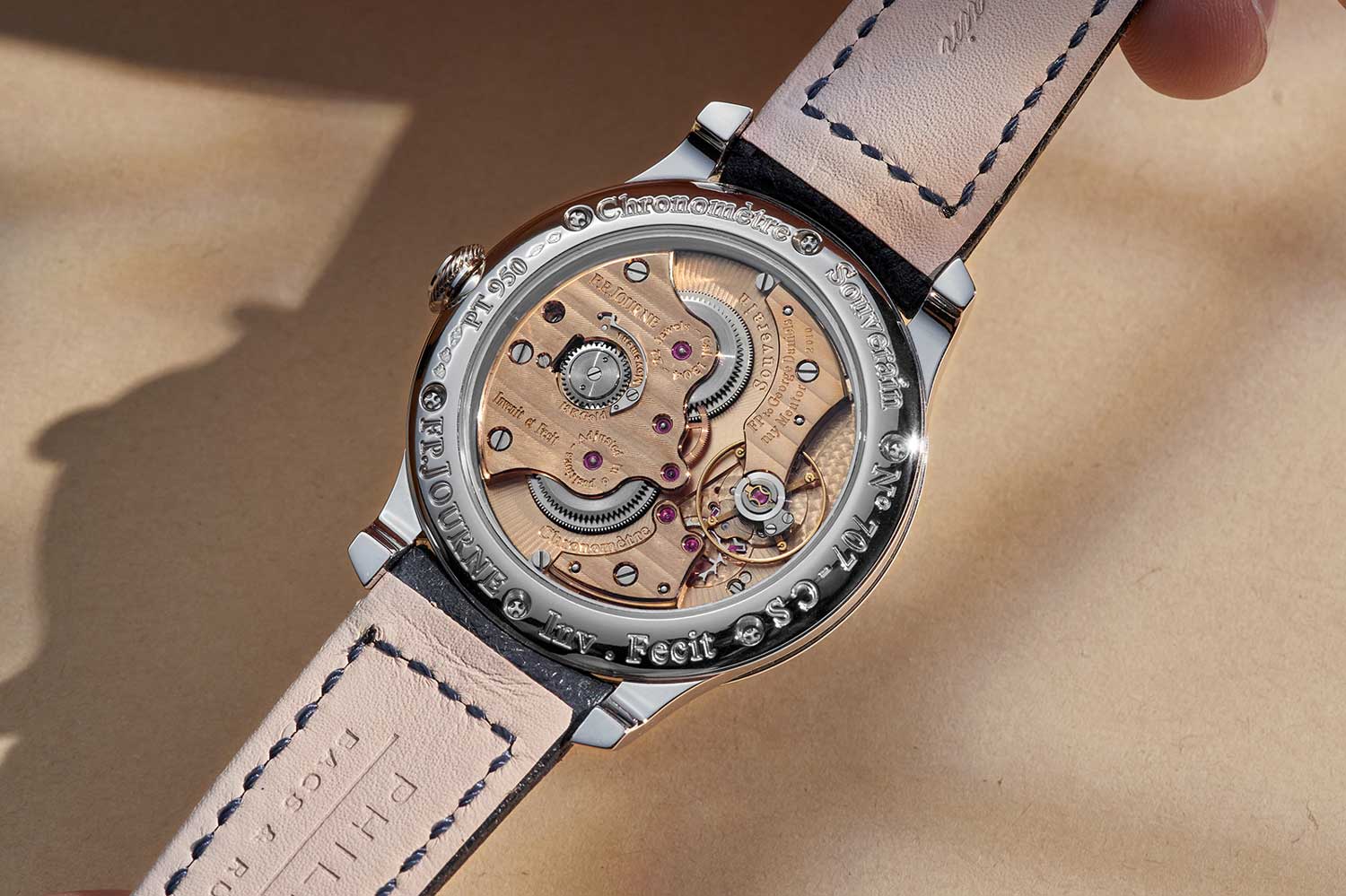
Visible through the sapphire caseback is the calibre 1304 that is characterized by a distinctive architecture with beautifully shaped bridges in 18k pink gold
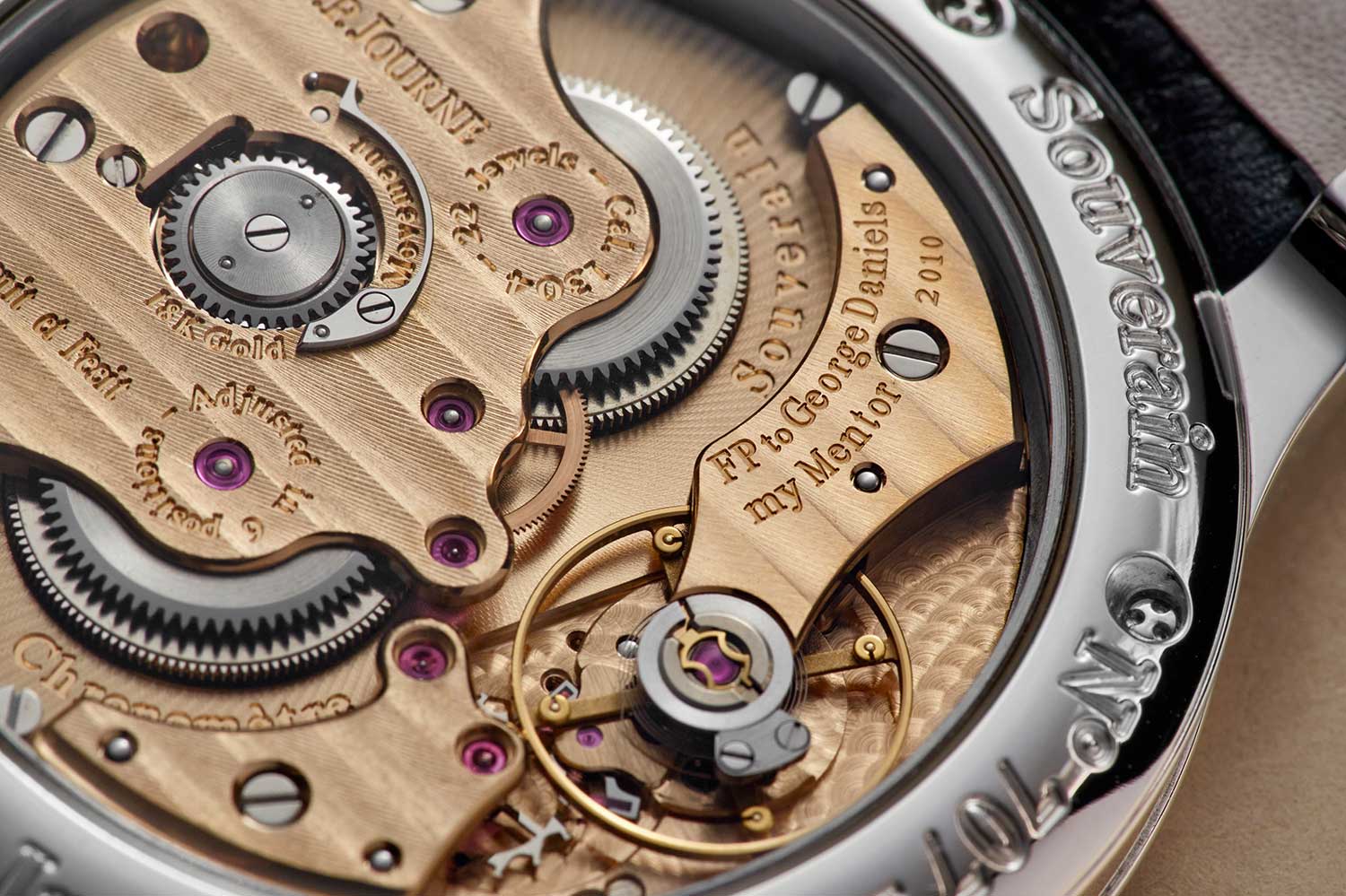
The going train between the centre wheel and escape wheel are hidden beneath the base plate, creating an exceedingly elegant architecture
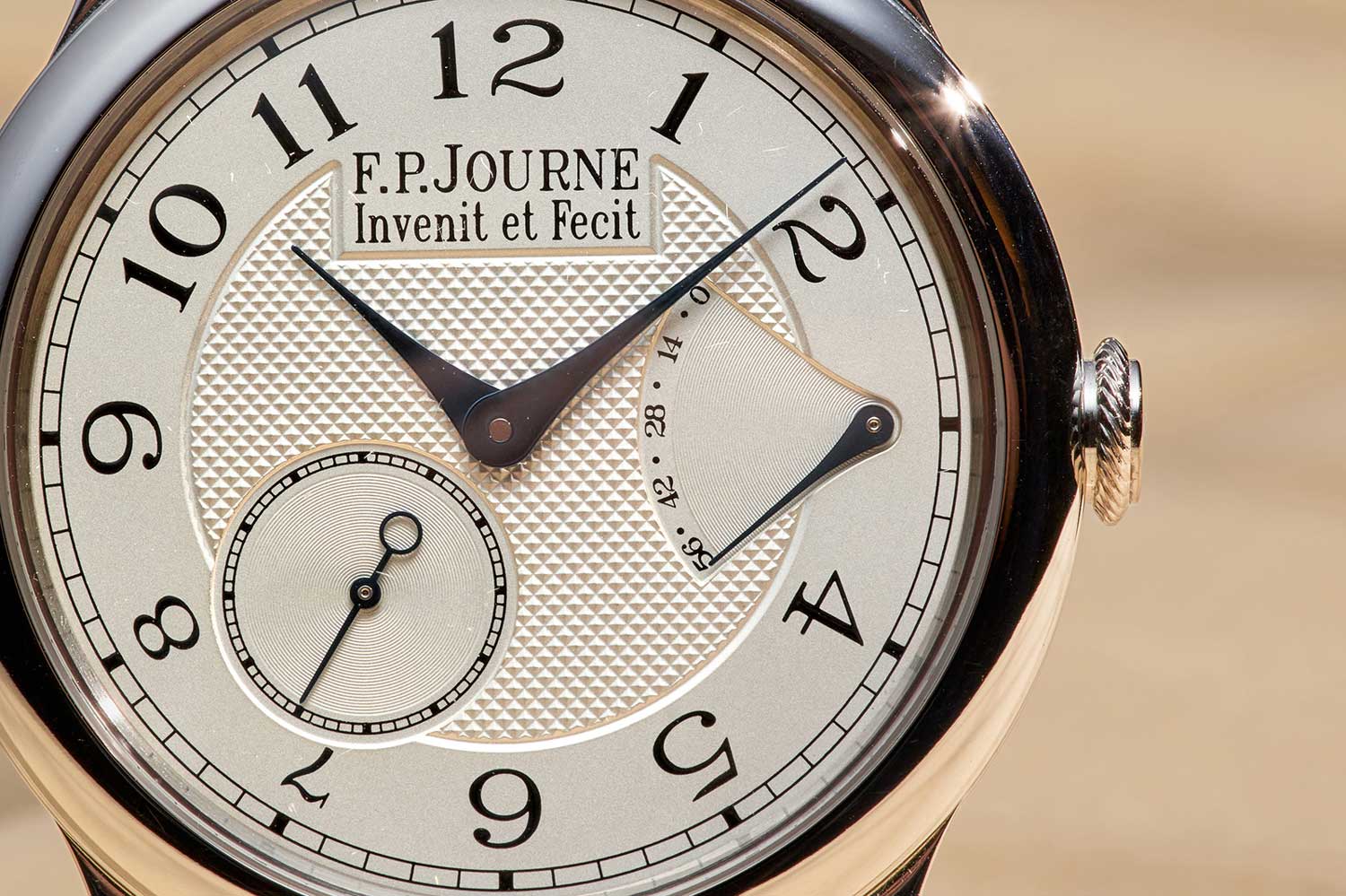
The attractive asymmetrical dial is adorned with Clous de paris guilloche and paired with blued steel hands










